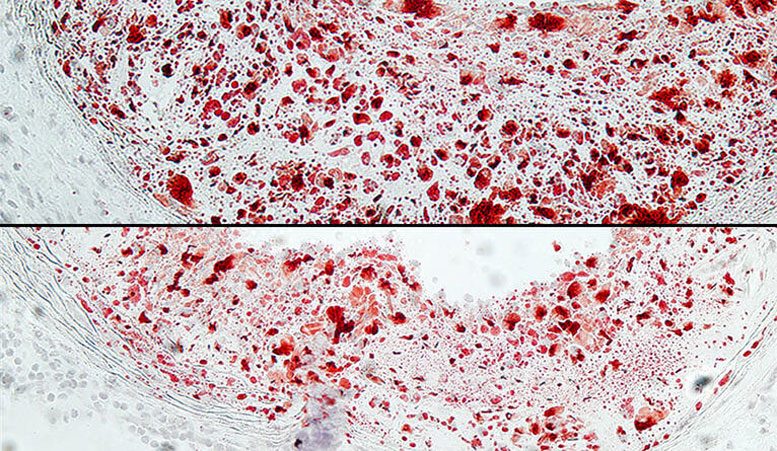
Diet-induced diabetes, obesity, and heart disease are the leading causes of death worldwide. In their search for novel therapies for these related chronic illnesses, Yale researchers investigated a protein called ANGPTL4. The protein plays an essential role in regulating the metabolism of lipoproteins, which transport fat and lipids in the bloodstream, and has been associated with an increased risk of heart disease in humans.
Senior authors Carlos Fernandez-Hernando and Yajaira Suárez and their colleagues had previously described the function of ANGPTL4 in immune cells, where it regulates lipid accumulation in the arteries and in the development of atherosclerosis (hardened arteries). In this follow-up study, to understand the contribution of this protein in controlling lipid and glucose balance throughout the body, the research team generated a novel mouse model lacking ANGPTL4 in fat, where it is normally present in high amounts. They found that without ANGPTL4 in fat, the mice had an improved metabolism of sugar and lipids. These effects were observed not only in fat tissue but in the liver and muscle tissues as well.
Additionally, in mice lacking ANGPTL4, the researchers noted reduced cholesterol and inflammation, which decreased the buildup of fats in arteries that can lead to heart disease. These findings suggest that a therapy that specifically targeted the protein in fat tissue could not only improve metabolism, but serve as a strategy for treating cardiovascular disorders as well, the researchers said.
Binod Aryal and Abhishek Singh, first authors on the study, plan to pursue further study of the protein in other metabolic tissues, including brown fat. Read their full paper in JCI Insight.
Reference: “Absence of ANGPTL4 in adipose tissue improves glucose tolerance and attenuates atherogenesis” by Binod Aryal, Abhishek K. Singh, Xinbo Zhang, Luis Varela, Noemi Rotllan, Leigh Goedeke, Balkrishna Chaube, Joao-Paulo Camporez, Daniel F. Vatner, Tamas L. Horvath, Gerald I. Shulman, Yajaira Suárez and Carlos Fernández-Hernando, 22 March 2018, JCI Insight.
DOI: 10.1172/jci.insight.97918